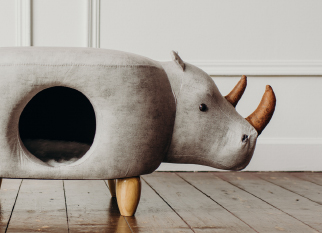Green Revolution in the Custom Copy Leather Industry: Five Trends in Raw Material Selection
1. Sustainable Procurement of Traditional Leather
Although traditional leather is still an important part of the Custom Copy Leather industry, companies in the industry are beginning to pay more attention to the sustainable procurement of leather. This means starting from the source and ensuring that the leather comes from certified and well-managed farms or ranches. These farms or ranches follow strict animal welfare standards and adopt environmentally friendly farming methods to reduce the negative impact on land, water and biodiversity. Some companies are also committed to sourcing by-product leather, that is, leather that is treated as waste in traditional meat production. In this way, not only waste generation is reduced, but also resource utilization efficiency is improved.
2. The rise of plant-based leather
As an alternative to traditional leather, plant-based leather has gained widespread attention in the field of custom replica leather in recent years. This type of leather is usually made from natural plant fibers, fruits or rhizomes through special processes, such as pineapple leaf fibers, mushroom roots, cactus skins, etc. These raw materials are not only renewable, but also absorb much more carbon dioxide during their growth than their carbon emissions during production, which helps to mitigate climate change. Plant-based leather not only has a similar touch and appearance to traditional leather, but is even superior to traditional leather in some aspects, such as breathability, water resistance and biodegradability. More importantly, the production process of plant-based leather usually does not involve the emission of harmful chemicals, which is more environmentally friendly.
3. Reuse of recycled leather
As the concept of circular economy has become more popular, the reuse of recycled leather has become a highlight of the custom replica leather industry. Recycled leather comes from waste clothing, furniture, car interiors, etc. Through advanced sorting, cleaning and reprocessing technologies, these waste leathers can be rejuvenated. The reuse of recycled leather not only reduces the environmental pollution caused by landfill and incineration, but also saves precious raw material resources. Since recycled leather often has unique textures and historical traces, it provides designers with a wealth of creative space, making custom replica leather products more personalized and storytelling.
4. Application of bio-based and biodegradable materials
Bio-based materials refer to materials derived from renewable biological resources (such as plants, microorganisms or animals), which can be naturally degraded at the end of their life cycle to reduce environmental pollution. In the field of custom replica leather, polymer materials such as bio-based polyurethane and polylactic acid are gradually replacing traditional petroleum-based plastics as coatings or adhesives. These bio-based materials not only have similar properties to traditional materials, but also can be quickly decomposed and returned to nature after being discarded. Some companies are also exploring the use of natural plant extracts as preservatives, antioxidants, etc., which further improves the environmental performance of the products.
5. Environmental certification and transparency
In order to ensure the authenticity and environmental protection of raw materials, more and more custom replica leather companies are beginning to seek third-party environmental certification, such as OEKO-TEX, GOTS (Global Organic Textile Standard), etc. These certification bodies ensure that products meet international environmental standards through strict testing of raw materials, production processes and final products. Companies have also begun to increase the transparency of the supply chain, disclose the source of raw materials, production processes and environmental impact information to consumers, and enhance consumers' trust.




















